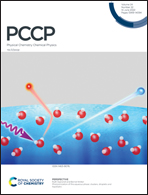Selective NMR detection of individual reaction components hyperpolarised by reversible exchange with para-hydrogen†
Abstract
NMR spectroscopy can sometimes be hampered by two inherent weaknesses: low sensitivity and overlap of signals in complex mixtures. Hyperpolarisation techniques using para-hydrogen (including the method known as SABRE) can overcome this sensitivity problem, but cannot circumvent spectral overlap. Conversely, a recently described selective excitation technique (known as DREAMTIME) can overcome overlap in mixtures, but suffers from a decrease in sensitivity. Here we demonstrate the combination of these two methods in a single approach termed SABRE-DREAM, to selectively provide hyperpolarised signals of user-specified components of a chemical reaction, where otherwise overlapping 1H signals would hinder reaction monitoring or analysis.

- This article is part of the themed collection: 2022 PCCP HOT Articles


 Please wait while we load your content...
Please wait while we load your content...